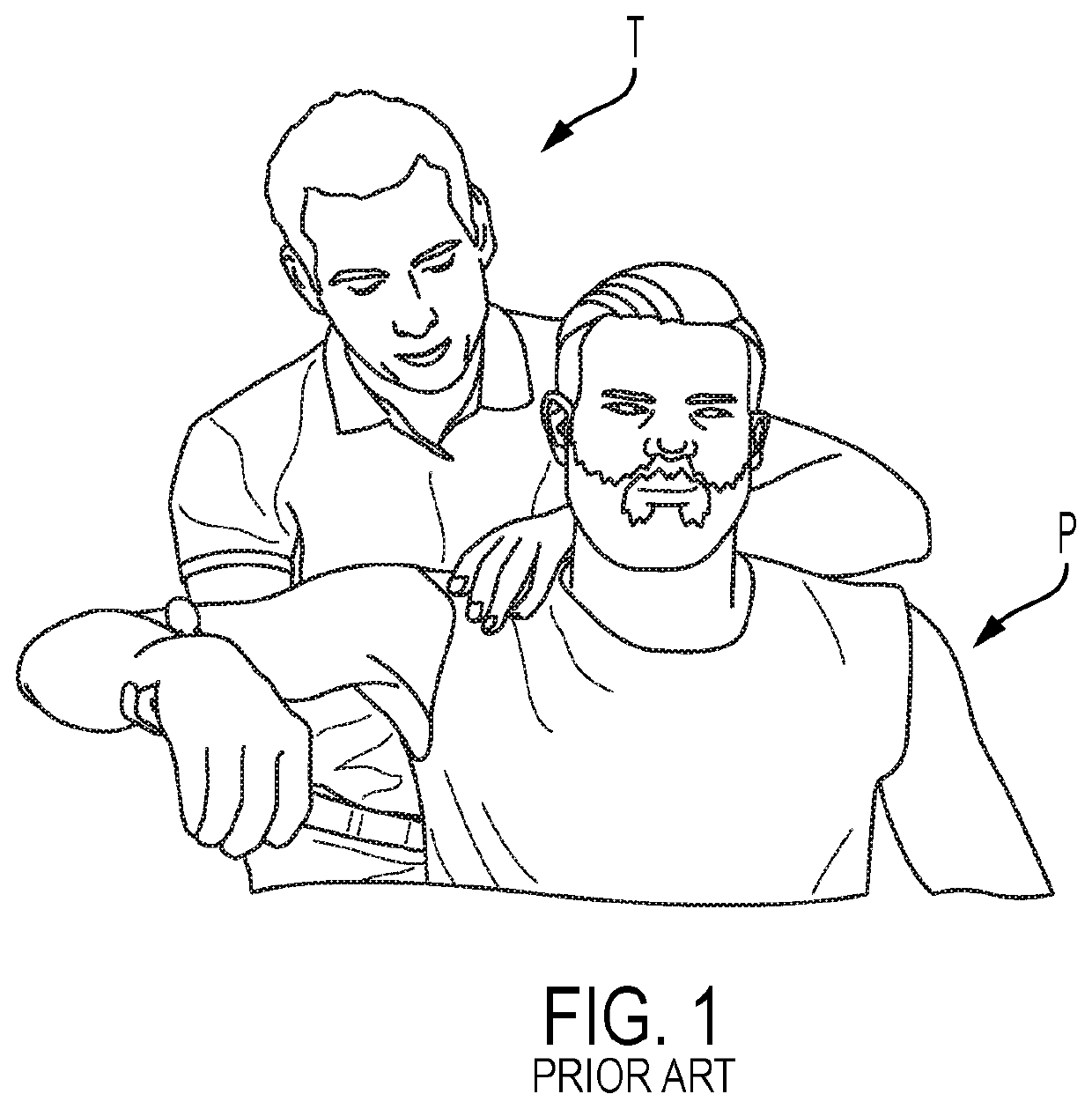Stabilizing sacpular rehabilitation brace
a stabilizing brace and sacpular technology, applied in the field of stabilizing braces, can solve the problems of less stability, less stability, and common instability
- Summary
- Abstract
- Description
- Claims
- Application Information
AI Technical Summary
Benefits of technology
Problems solved by technology
Method used
Image
Examples
Embodiment Construction
[0026]Described herein is a stabilizing scapular rehabilitation brace that operates to aid patients in rehabilitating their shoulder joint in an anatomically correct manner to optimize outcomes following injury or surgery so as to deliver vastly improved convenience and benefits relative to existing options in the marketplace. When patients engage in shoulder hiking movements during rehabilitation (or rehab) sessions, it negatively impacts their ability to regain proper shoulder joint functionality and strength of shoulder following injury or surgery. But when the stabilizing scapular rehabilitation brace is worn during shoulder rehab exercises, forces the patient to perform exercises in an anatomically correct manner that will optimize patient's recovery. The stabilizing scapular rehabilitation brace is additionally adjustable so that it can correctly fit on all body types.
[0027]Referring now to the drawings and, in particular, FIG. 1, a common existing technique to reduce shoulder...
PUM
 Login to View More
Login to View More Abstract
Description
Claims
Application Information
 Login to View More
Login to View More - R&D
- Intellectual Property
- Life Sciences
- Materials
- Tech Scout
- Unparalleled Data Quality
- Higher Quality Content
- 60% Fewer Hallucinations
Browse by: Latest US Patents, China's latest patents, Technical Efficacy Thesaurus, Application Domain, Technology Topic, Popular Technical Reports.
© 2025 PatSnap. All rights reserved.Legal|Privacy policy|Modern Slavery Act Transparency Statement|Sitemap|About US| Contact US: help@patsnap.com



